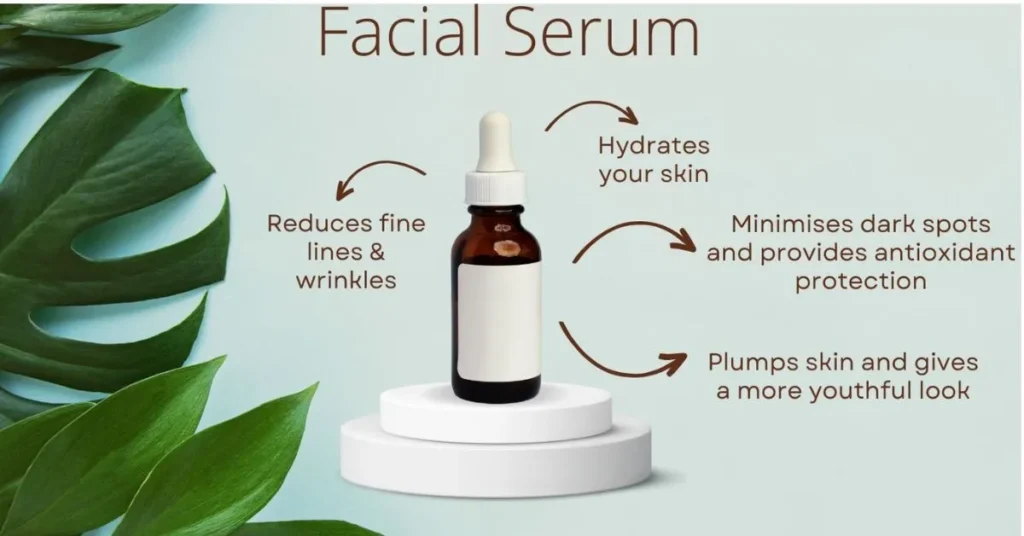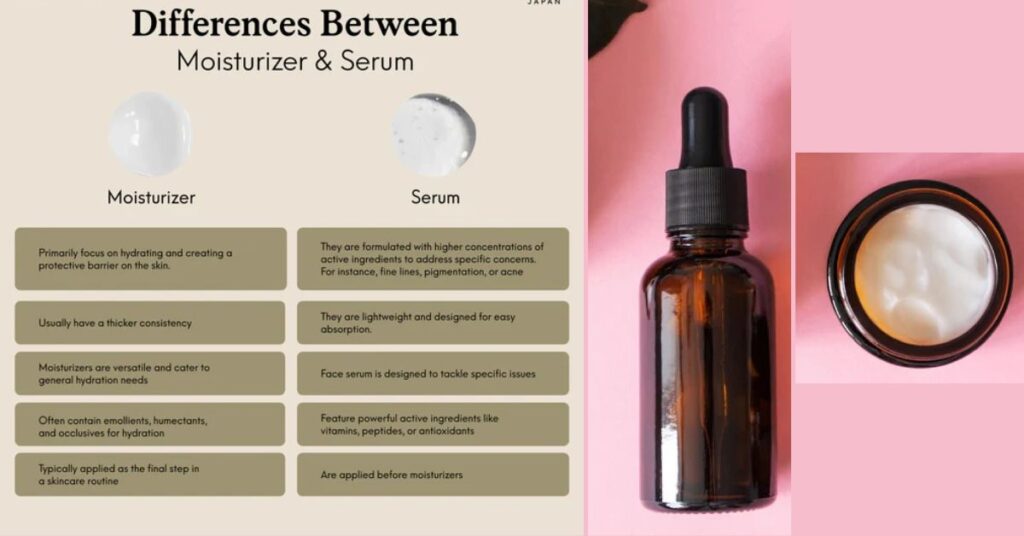When it comes to skincare, we’ve all heard about serums and moisturizers, but what exactly do they do? With so many products on the market, it can be confusing to know what to use and when. So, let’s break it down in a way that’s easy to understand.
Serums and moisturizers are essential skincare products. Serums target specific skin concerns like wrinkles and dehydration, while moisturizers provide essential hydration, strengthen the skin barrier, and protect against environmental damage. To achieve optimal skin health, use both together.
In this guide, we will explore what serums and moisturizers are, how they differ, and how to use them together to give your skin the best care possible.
Table of Contents:
What is a Serum?
A serum is a lightweight skincare product formulated with a high concentration of active ingredients. Its purpose is to deliver targeted treatment to specific skin concerns like wrinkles, dark spots, or dehydration.

Key Features of a Serum:
| Feature | Description |
| Consistency | Lightweight, often water- or gel-based. |
| Purpose | Targets specific skin concerns such as acne, fine lines, or hyperpigmentation. |
| Absorption | Quickly absorbed into the deeper layers of the skin. |
| Active Ingredients | Contains potent components like vitamin C, hyaluronic acid, or retinol in high concentrations. |
What is a Moisturizer?
A moisturizer is a cream or lotion designed to hydrate and create a protective barrier over the skin, locking in moisture and shielding it from environmental damage.

Key Features of a Moisturizer:
| Feature | Description |
| Consistency | Thicker and creamier compared to serums. |
| Purpose | Prevents moisture loss and keeps the skin hydrated and soft. |
| Absorption | Works on the outermost layer of the skin, providing surface hydration. |
| Active Ingredients | Includes ingredients like glycerin, ceramides, or oils to nourish and protect the skin barrier. |
Key Differences Between Serums and Moisturizers

| Feature | Serum | Moisturizer |
| Purpose | Targets specific concerns like aging or acne. | Hydrates and protects the skin’s surface. |
| Texture | Lightweight and fast-absorbing. | Thicker and creamier. |
| Penetration | Reaches deep into the skin’s layers. | Works on the outermost layer of the skin. |
| When to Apply | Before moisturizer for maximum absorption. | After serum to lock in hydration. |
How to Choose the Right Products for Your Skin
The key to a successful skincare routine is selecting products that suit your skin type and concerns.
Choosing a Serum:
- For Dull Skin: Look for vitamin C serums to brighten and even out skin tone.
- For Dry Skin: Hyaluronic acid serums provide intense hydration.
- For Aging Skin: Retinol serums help reduce fine lines and boost collagen production.
- For Acne-Prone Skin: Niacinamide and salicylic acid serums can reduce blemishes and control oil.
Choosing a Moisturizer:
- For Oily Skin: Opt for lightweight, oil-free, gel-based moisturizers.
- For Dry Skin: Use richer, cream-based moisturizers with ingredients like shea butter or ceramides.
- For Sensitive Skin: Choose fragrance-free, hypoallergenic moisturizers.
How to Use Serums and Moisturizers Together
Begin your skincare routine with a gentle cleanse to prepare your skin. Next, apply a few drops of serum, focusing on areas of concern such as fine lines, uneven tone, or dehydration. Gently press the serum into your skin, allowing approximately one minute for absorption. Finally, apply a moisturizer to lock in the serum’s benefits, providing long-lasting hydration and protection.
Ingredients and Formulations
What to Look for in Serums and Moisturizers
Highlight the importance of choosing products with effective ingredients:
- For Serums:
- Retinol for anti-aging.
- Vitamin C for brightening and reducing dark spots.
- Hyaluronic acid for hydration.
- For Moisturizers:
- Natural hydrators like coconut oil or shea butter for nourishment.
- Ceramides for repairing the skin barrier.
- pH Levels: Stress the importance of selecting products with a pH close to the skin’s natural level for optimal compatibility.
- Allergen Awareness: Warn against potential irritants like fragrances or dyes.
FAQs:
1. Can I use more than one serum?
Yes, you can! If you have multiple skin concerns, you can layer different serums, but it’s important to apply them in the right order—always the thinnest first and the thickest last.
2. Can I skip the moisturizer if I’m using a serum?
It’s best to use both. While serums address specific skin issues, moisturizers keep your skin hydrated and help lock in the serum’s benefits. Skipping moisturizer might leave your skin feeling dry, especially if you have dry or sensitive skin.
3. Are there any ingredients I should avoid in serums or moisturizers?
If you have sensitive skin, avoid products with harsh fragrances, alcohol, or synthetic dyes, as these can irritate the skin. Always choose products that suit your skin type.
4. What comes first, serum or moisturizer?
Apply serum first, as it is lighter and penetrates deeper. Follow with a moisturizer to lock it in.
Conclusion:
Serums and moisturizers are essential parts of a well-rounded skincare routine. By understanding their roles and using them correctly, you can target specific concerns while maintaining hydration and protection.
Start by identifying your skin type and needs, then select products with effective ingredients. With the right combination, you can achieve healthy, radiant skin that glows from within.


